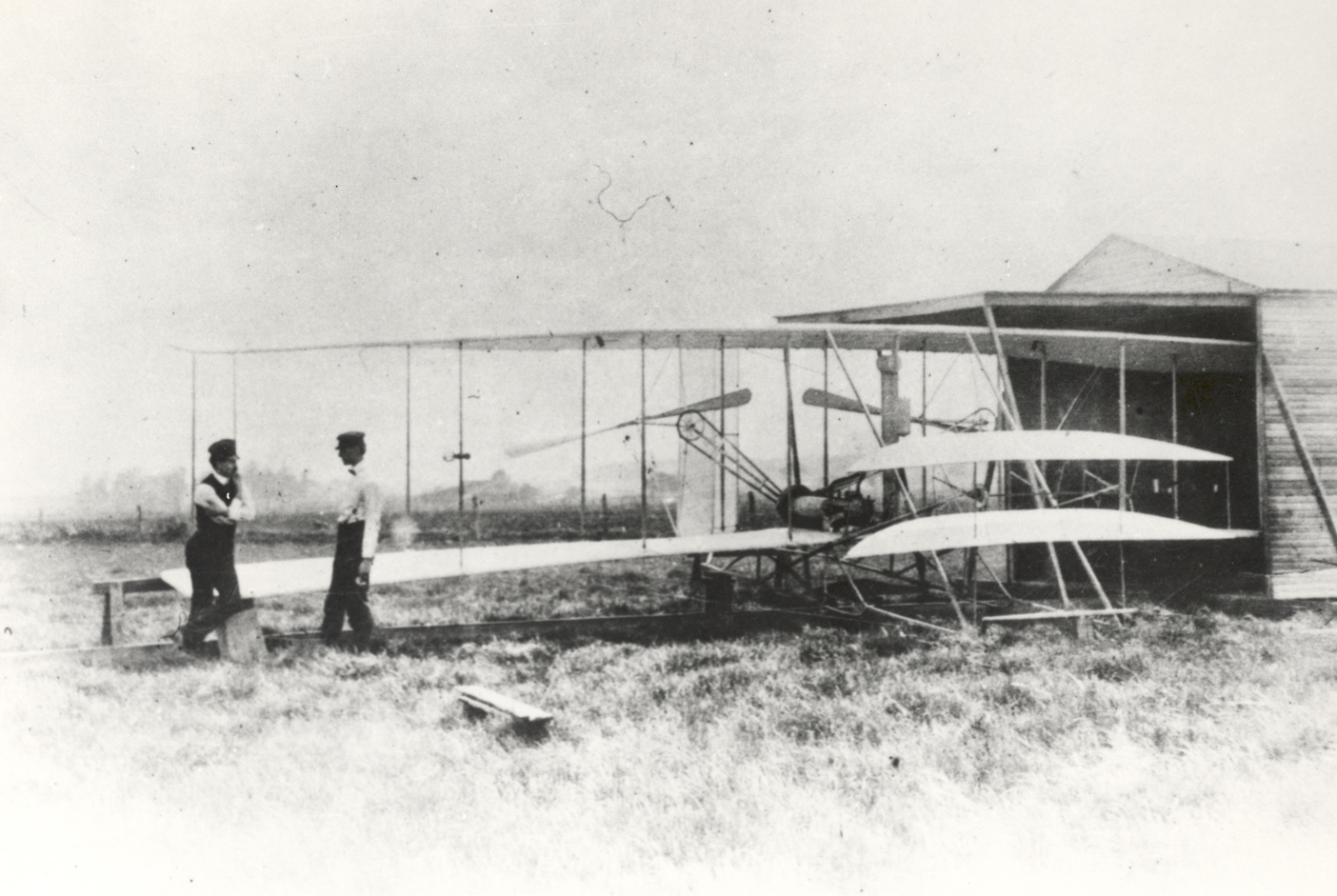Space History Photo: Wilber and Orville Wright with Flyer II at Huffman Prairie

In this historical photo from the U.S. space agency, Wilbur and Orville Wright stand with the Flyer II at Huffman Prairie, outside of Dayton, Ohio, on May 1, 1904.
The event involved a little-known fact. While you might think the first airplane fights required light wind conditions, the reverse was actually true. The Wright brothers had a much more difficult time testing their aircraft at Huffman Prairie than at the historic site of Kill Devil Hills, North Carolina, due to the lack of high winds. Gusts could be dangerous, but a good stiff headwind was needed to get them off the ground.
To artificially reach the wind speed of 27 mph needed for liftoff, the brothers invented a catapult which provided the extra speed needed to become airborne. On Sept. 7, 1904, the Wrights tested the first catapult and it was a success, giving the Flyer II a push to make half-mile-long flights.
Each weekday, SPACE.com looks back at the history of spaceflight through photos (archive).
Breaking space news, the latest updates on rocket launches, skywatching events and more!

The National Aeronautics and Space Administration (NASA) is the U.S. government agency in charge of the civilian space program as well as aeronautics and aerospace research. Founded in 1958, NASA is a civilian space agency aimed at exploring the universe with space telescopes, satellites, robotic spacecraft, astronauts and more. The space agency has 10 major centers based across the U.S. and launches robotic and crewed missions from the Kennedy Space Center in Cape Canaveral Florida. Its astronaut corps is based at the Johnson Space Center in Houston. To follow NASA's latest mission, follow the space agency on Twitter or any other social channel, visit: nasa.gov.
